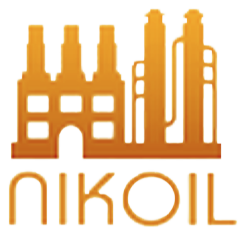The debate between Waste Destructor and Incinerator has become a pivotal issue as communities and industries seek sustainable waste-management solutions. While traditional incinerators burn refuse at high temperatures, they often emit harmful pollutants and leave behind toxic ash. In contrast, NikOil’s Waste Destructor employs advanced plasma technology to maximize waste destruction, minimize emissions, and shrink residues to a fraction of conventional levels.
How Traditional Incinerators Work
Conventional incinerators combust waste using fossil‑fuel burners or supplemental energy to maintain temperatures around 800–1,000 °C. Though effective at volume reduction, they release dioxins, furans, heavy metals, and fine particulates (PM₂.₅) into the atmosphere. Moreover, they produce up to 30–35 % toxic ash that requires secure disposal, posing long‑term soil and groundwater risks.

Introducing the Waste Destructor
NikOil Waste Destructor leverages plasma‑based filtration combustion in a counterflow design, reaching internal temperatures above 2,000 °C without added fuel. This self‑sustaining process liquefies most organic matter, reduces waste volume by up to 86 %, and yields only ~6 % inert ash—suitable as a cement additive. Its closed‑loop combustion system virtually eliminates smoke, particulates, and toxic off‑gases
| Feature | Incinerator | Waste Destructor |
| Fuel Requirement | Diesel, natural gas | None (uses waste’s own energy) |
| Waste Volume Reduction | ~65 % | ~86 % |
| Residue (Ash) | 30–35 % | ~6 % |
| Harmful Emissions | Dioxins, furans, PM₂.₅ | Negligible |
| Operating Cost per Ton | High (fuel + staff) | Lower (electricity + one operator) |
| Compliance with Emission Standards | Often exceeds limits | Well below global thresholds |


Environmental & Regulatory Benefits
By virtually eliminating hazardous emissions and drastically reducing ash, the Waste Destructor aligns with Indonesia’s National Waste Management Acceleration roadmap toward 2029 and global commitments to clean air. Its low‑footprint design eases permitting, supports circular‑economy goals, and enables on‑site deployment in urban centers, remote islands, and industrial parks. With this, the debate between Waste Destructor and Incinerator has been concluded.
Toward Integrated Waste Solutions
As President Prabowo calls for accelerated national waste management by 2029 and Indonesia positions itself as the “lungs of the earth,” public‑private collaborations become essential. The Waste Destructor complements broader sustainability initiatives—offering municipalities and industries a scalable, cleaner alternative to incineration.







